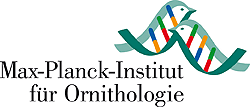In the scope of movement ecology, Global Positioning Systems (GPS) have evolved significantly offering a unique insight into animal behavior. But understanding this behavior is dependent on our ability to comprehend the underlying environmental conditions that guides it. In this context, remote sensing becomes a fundamental tool. It provides information on the spatial and temporal variability of the landscape and provides us the means to understand the impact of environmental change over animal behavior. However, linking remote sensing and animal movement can be troublesome due to the differences in the spatial and temporal scales at which they are acquired (Neuman et al, 2015). As a consequence, methods that are sensitive to the constraints imposed by remote sensing in the analysis of animal movement are required. rsMove answers to this issue providing tools to query and analyze movement data using remote sensing.
This gitHub is used as a basis for the improvement of rsMove. A stable release is available on CRAN and can installed with:
install.packages('rsMove')A paper on the package is currently available describing the general applicability of rsMove. Addtitionally, we developed a vignette on the use of rsMove to predict environmental resource suitability following the methodology described in this paper.
For bug reports, please use our issue page. Feature requests and other contributions are also welcome.
The Department of Remote Sensing of the University of Würzburg has developed other R packages that might interest you:
Click here for news on our department.
This initiative is part of the Opt4Environment project and was funded by the German Aerospace Center (DLR) on behalf of the Federal Ministry for Economic Affairs and Energy (BMWi) with the research grant 50 EE 1403. The movement data we used was provided by the Max Planck institute for Ornithology (MPIo). Click below to reach the involved parties.


